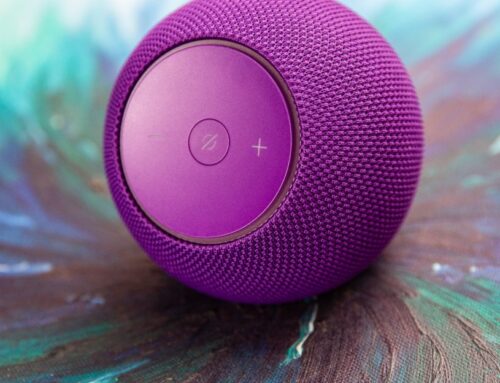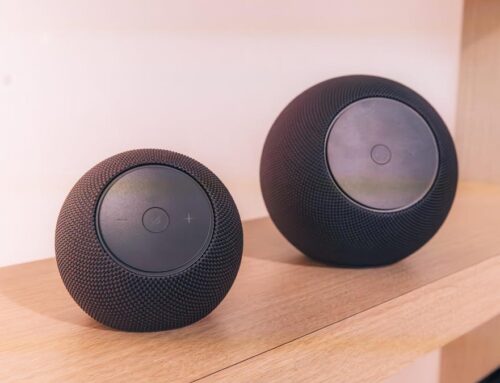Amazon Echo Studio (2025) review: A comprehensive redesign for Alexa+
October 29, 2025
I vividly remember testing the first Echo Studio. Even though that was nearly six years ago, I can clearly recall my surprise that Amazon had finally built a smart speaker that actually sounded good. It certainly helped that Amazon created a device that appropriately broadcasted spatial audio, and one that offered a boost to movies in the living room (if you bought a pair of them).
I was similarly surprised to see the overhauled Echo Studio when Amazon revealed it a few weeks ago. Could the company offer the same audio performance in a speaker that was 40 percent smaller? The 2025 Echo Studio ($220) combines three 1.5-inch full-range drivers with a 3.75-inch woofer in a very confined space, all powered by the company’s new AI-ready processor. There’s certainly a lot to like about the comprehensive reboot of the Studio after such a long time, but for now, there are also several caveats.
75100Expert Score
Amazon Echo Studio (2025)
The new Echo Studio is a comprehensive overhaul that makes Alexa+ the star of the show, but it offers inconsistent sound quality depending on your content.
- Better looking, compact design
- Surprisingly immersive sound at times
- Alexa+ is a big upgrade
- Inconsistent sound quality
- Alexa Home Theater isn’t ready
- Tap controls need work
What’s good about the Echo Studio?
Amazon completely redesigned the Echo Studio, opting for a much more compact, spherical look compared to the previous large cylinder. To me, this is an upgrade; it looks less like a speaker and more like a piece of home decor. Amazon also moved the trademark light ring to the front, the element that illuminates when you’re talking to Alexa, so it’s easier to see when you’re directly facing the speaker. The lights will also display volume level in white when you make an adjustment, flash red if you mute the microphones and show blue for Bluetooth pairing mode. If you employ the Drop In feature, the Echo’s intercom of sorts, the ring glows green while you check in on what’s happening in the room from somewhere else.
The company also relocated all of the controls. The volume and mute buttons that used to be on top are now on an angled panel on the front, offering satisfying travel when you press them. And those are the only three buttons you get on the Echo Studio, as Amazon wants you to use noice commands for everything else when playing music or podcasts. Or, you know, you could reach for your phone.
There are optional tap controls that can be used to snooze alarms, stop timers and end both calls and Drop Ins. You simply tap the top of the Echo Studio for this. What’s more, you can enable “advanced” tap control that allows you to play/pause media with the same action.
Amazon promises “powerful bass and crystal-clear vocals” on the new Echo Studio, and I’d say the latter holds true. There is great clarity in the sound here, and the tuning definitely favors highs and mids across nearly every genre. For example, the synths and vocals on the TRON: Ares soundtrack by Nine Inch Nails are more prominent than the drum machines or bass line. Still, I heard an immersive quality to these songs, but not as much as I’ve noticed using headphones or earbuds. There’s more low-end tone on Thrice’s Horizons/West, and overall, the instruments offer a more enveloping quality than most other albums I tested. Just know there’s quite a bit of variation from album to album and genre to genre.
Like the original Echo Studio, this model supports spatial audio, Dolby Atmos and Sony 360 Reality Audio content. Those are available from various streaming platforms, including Amazon Music Unlimited. Amazon only sent me one of the new speakers, so it’s tough to evaluate immersive Atmos sound here, but I gave it my best shot. The Echo Studio performs slightly better with Dolby Atmos tunes from Amazon Music as those songs have more depth and a wider soundstage. However, the bass is still quite muted, so even the spatial audio and Ultra HD quality boost don’t rescue the sluggish low-end tone and prominent vocals.
A word about Alexa+

The new Echo Studio comes with early access to Alexa+, Amazon’s next-gen virtual assistant. The company has spent the last few years overhauling its companion, and my colleague Cherlynn Low has an in-depth preview of what you can expect when you’re able to use it. I’ve been chatting with the new Alexa for about a week during the course of testing this speaker, and to my surprise, this AI-powered assistant is indeed much improved.
The biggest change I’ve noticed is in on-going conversations with multiple follow-up questions or comments. The new AZ3 Pro chip inside the Echo Studio certainly helps keep things snappy, so there are no awkward pauses. I asked Alexa+ to remind me to make pizza dough one afternoon, and it confirmed the request without hesitation. Taking a cue from Cherlynn, I then asked about my mood right after, to which Alexa replied that I seemed to be chill based on my voice — a good “Monday vibe.”
Except it wasn’t Monday, it was Tuesday. When I corrected Alexa, the assistant played it cool, thanking me for helping and apologizing for the mistake. It then recalled the initial pizza request, commenting that it seemed like I was on top of things that day, including my dough recipe and the task at hand. It was the most human-to-human interaction I’ve ever had with a virtual assistant, and it felt like the promise of casual conversations with technology like this was finally fulfilled. And, I have to say, it kind of freaked me out.
My week–long fling hasn’t been without a few bumps though. Despite the Echo Studio having a built-in temperature sensor, Alexa+ can’t pull data from it. When you ask about the temperature in your house, the assistant checks for a connected thermostat, which I don’t have synced with the Alexa app. There are still times like this where you’ll run into some head-scratching limitations, but overall, the new Alexa is more human-like than ever when you interact with it. And again, at times, it’s pretty unsettling.
When the early access period is over, you’ll need a Prime membership to continue using Alexa+ for free. If you don’t have one, the next-gen assistant will cost you a whopping $20/month. And right now, the preview is only available in the US and in US English.
What’s not so good about the Echo Studio?

While the clarity and somewhat immersive audio performance on the Echo Studio is a highlight, the lack of detail in the bass tuning is a hindrance most of the time. There is noticeable bass when a song calls for it, but the low-end tone has a muted, almost muffled quality that’s missing nuance. This makes songs like Water From Your Eyes’ “Born 2” sound much flatter and constrained than I’ve heard on the second-gen Bose QuietComfort Ultra Headphones and AirPods Pro 3.
Amazon spent time during its recent launch event talking about Alexa Home Theater, a feature that will allow you to combine up to five Echo Studio speakers (or Echo Dot Max) with a compatible Fire TV stick. The company promises that all you have to do is plug in your gear and Alexa will handle the setup and tuning for you automatically. Unfortunately, Alexa Home Theater isn’t available yet; the company says it will be released “in the coming weeks.” Of course, this means I wasn’t able to test it, which leaves one of the Echo Studio’s best features — at least on paper — for future evaluation.
The company also nixed the 3.5mm input from the original Echo Studio. While I can appreciate that it was a much larger speaker, and 2019 was an entirely different time, I did like that Amazon gave us the option for wired connectivity on that device. With this new model, you’re left with Wi-Fi and Bluetooth.
Despite enabling tap controls in the Echo Studio settings in the Alexa app, I could only get a few of them to work (snooze alarms, dismiss timers, end calls and stop Drop In). I even made sure to stand right in front of the speaker so its proximity sensors would know I was there, tapping awkwardly on the 3D knit fabric. Obviously, this doesn’t block any of the speaker’s functions as you can just use your voice for all of it. However, the ability to at least play/pause directly on the speaker would be handy.
Wrap-up
The second iteration of the Echo Studio is a refined smart speaker that’s purpose-built for Amazon’s next-gen AI voice assistant. The device is a nice home for Alexa+ and the new design is certainly an improvement over the 2019 aesthetic of the original. While there’s some aspects of the sound on the Echo Studio that I admire, the tuning doesn’t offer the comprehensive oomph of that first speaker. That’s mostly due to the lack of detail in the bass, despite a pleasingly immersive soundstage overall. One of the speaker’s main features is still on the way, and the tap controls need fine-tuning, so for now, the new Echo Studio has a considerable amount of unfulfilled potential.
Search
RECENT PRESS RELEASES
Related Post




